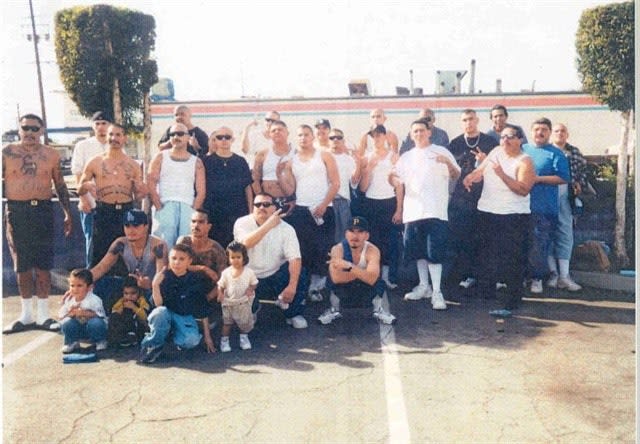The opposite extreme of this phenomenon is those cops who try to look like gangsters. They dress like outlaw bikers, hip hop rappers, skinheads, or tattooed cholos. This would also draw the attention of gang members and mark them as priority targets.
Off-duty dress should help you blend in with the average citizen, not make you stand out. Concealed carry means that your weapon should not be exposed. Conceal it, if you want the life-saving element of surprise.
Preparing for an off-duty confrontation with multiple gang members while you're alone, without a radio, ballistic vest or foreseeable back-up is a serious matter. Here's how we old gang dinosaurs got ready, or should I say "stayed ready." The LASD OSS gang deputies were some of the first officers to go to the large capacity 9mm semi-autos with the S&W Model 59. My back-up and off-duty weapon became a 12-shot S&W Model 469 9mm with a 20-round spare magazine (33 rounds).
Thinking and acting in a tactical way is not a natural inclination; it must be learned and practiced. It must become part of your on- and off-duty habit. Don't expect this to be easy or well accepted by others. Carry your off-duty weapon everywhere. Carry a knife, and have a flashlight and handcuffs handy. Prepare and rehearse scenarios like bad guys showing up at your family's front door. This happened to me.[PAGEBREAK]
Outstanding OSS gang units led by sergeants such as Ed Dvorak, Charlie Araujo and others begged, barrowed and invented police equipment and training far advanced of our regular departmental training. We spent our own time and money to train with LAPD and LASD SWAT teams. We trained with experienced experts from Israel, Jordan, France, New Zealand, and England who belonged to special anti-terrorist units. This somehow seemed to be offensive to those who felt that "the department-issued equipment and training was enough." To be the best, train like the best.












